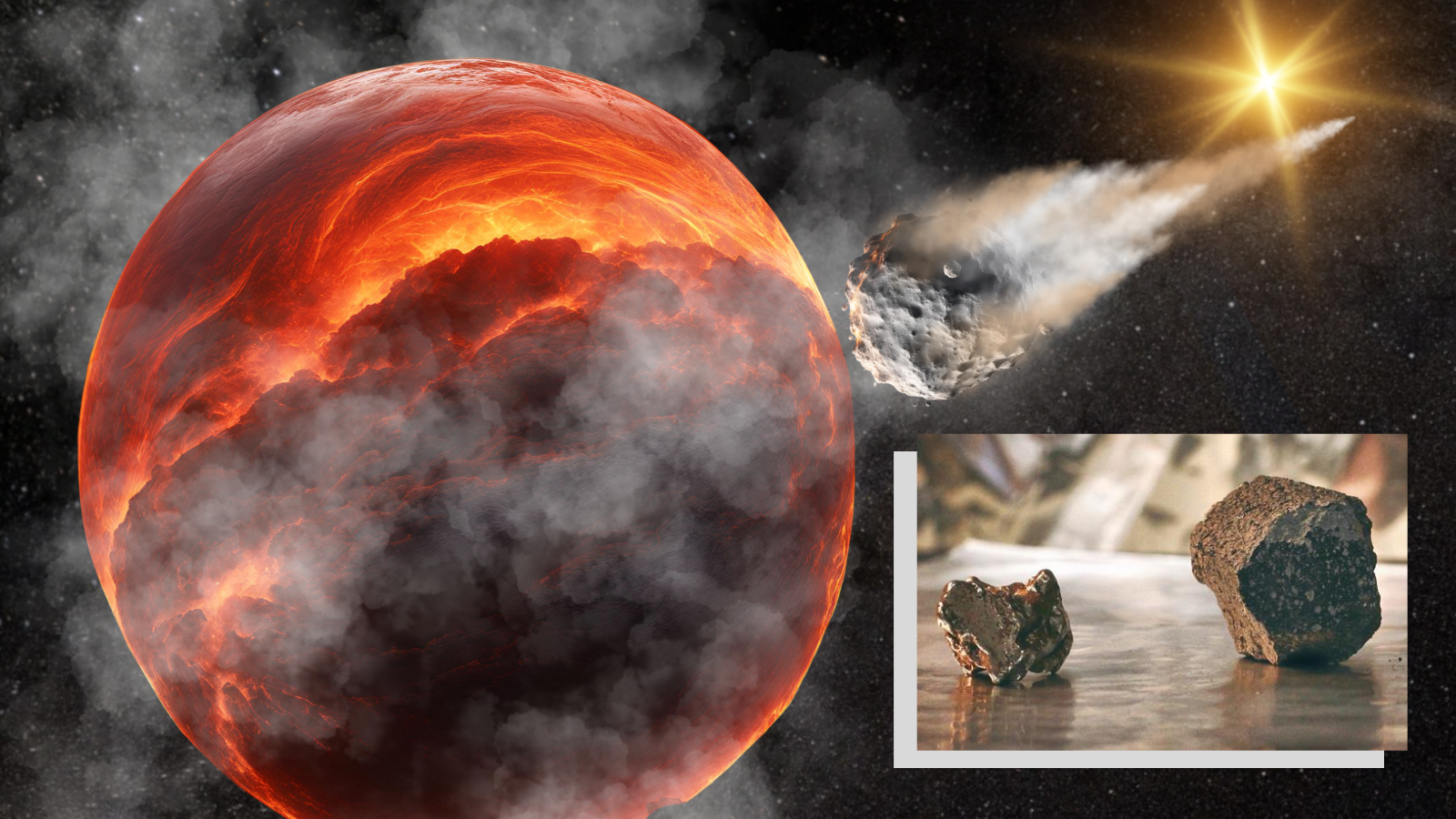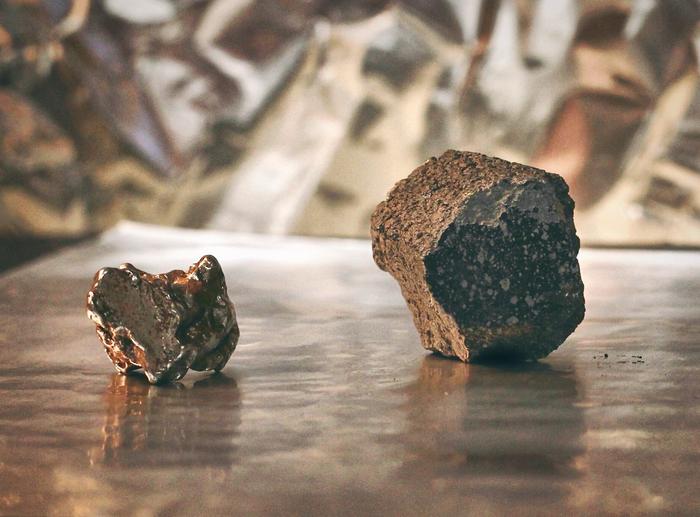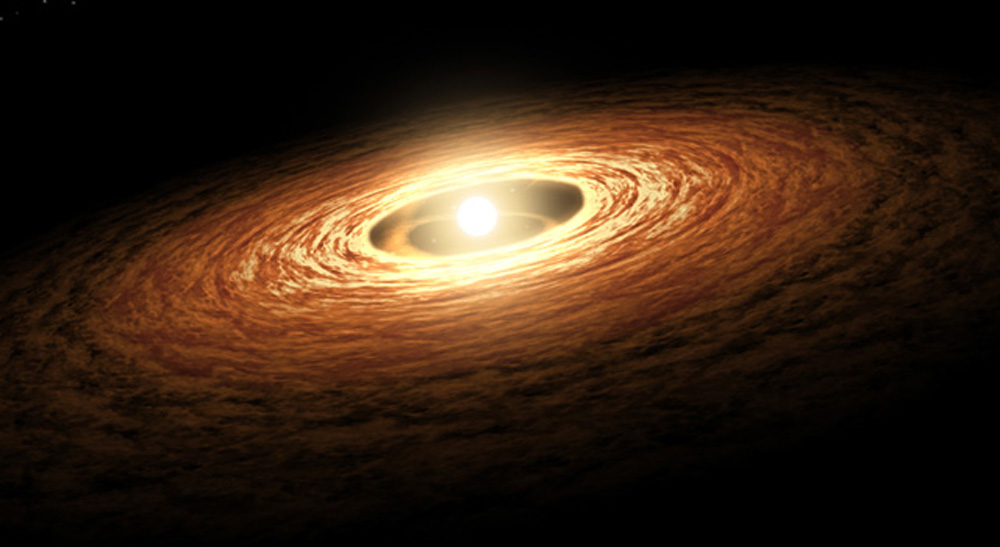The key ingredients for life on Earth came from space, new evidence suggests
'If we can understand how these materials came to be on Earth, it might give us clues to how life originated here, and how it might emerge elsewhere.'

New evidence has emerged suggesting that the building blocks of life were delivered to the primordial Earth from space by meteorites, a finding that could help scientists hunt for alien life.
These meteorites would have been the fractured remains of early "unmelted asteroids," a type of planetesimal. Planetesimals are small rocky bodies that served as the main building blocks of the solar system's rocky planets, including Earth. They were formed around 4.6 billion years ago in the disk of dust and gas around the infant sun as particles around our young star began to stick together, accreting more mass and making progressively larger bodies.
A team of researchers tracked the chemical element zinc in meteorites to determine the origin of Earth's "volatiles." These are elements or compounds that change into vapor at relatively low temperatures. They are important because they include six common chemicals vital for living things, including water.
"One of the most fundamental questions on the origin of life is where the materials we need for life to evolve came from," study team leader Rayssa Martins, from the Department of Earth Sciences at the University of Cambridge in England, said in a statement.
"If we can understand how these materials came to be on Earth, it might give us clues to how life originated here and how it might emerge elsewhere," Martins added.
Related: The building blocks of life can form rapidly around young stars
Follow the zinc
Martins and colleagues from Cambridge and Imperial College London chose zinc because, when it is formed in meteorites, it has a unique composition that can be used to identify the origins of volatiles.
Breaking space news, the latest updates on rocket launches, skywatching events and more!
The team previously found that Earth's zinc seems to have originated from different regions of the solar system. Around half came from the inner region of the solar system, close to our planet and the other rocky worlds by the sun. However, the other half seems to have originated from out beyond the fifth planet from the sun, the gas giant Jupiter.
This is possible to gauge because planetesimals aren't all the same. The planetesimals that formed in the earliest era of the solar system were exposed to high levels of radiation from the infant sun. This caused them to melt, thus easily losing volatiles through vaporization.
Planetesimals that came together later in the solar system's formative years weren't exposed to as much radiation, meaning they didn't experience as much melting and were able to hold on to more of their volatiles.
The team looked at zinc in a large sample of meteorites that originate from different planetesimals. They then traced the arrival of different types of zinc over the tens of millions of years that our planet was accreting material.
They found that melted planetesimals accounted for around 70% of our planet's total mass but only delivered about 10% of its zinc content. That means 90% of Earth's zinc originated from "unmelted" planetesimals with higher amounts of intact volatiles. The consequence is that these unmelted space rocks must have also delivered a lot of volatiles to the forming Earth, too.
"We know that the distance between a planet and its star is a determining factor in establishing the necessary conditions for that planet to sustain liquid water on its surface," Martins added. "But our results show that there’s no guarantee that planets incorporate the right materials to have enough water and other volatiles in the first place — regardless of their physical state."
The research conducted by Martins and colleagues may have implications far beyond the reaches of our planet, assisting in the ongoing search for life elsewhere in the cosmos.
"Similar conditions and processes are also likely in other young planetary systems," Martins concluded. "The roles these different materials play in supplying volatiles is something we should keep in mind when looking for habitable planets elsewhere."
The team's research was published on Friday (Oct. 11) in the journal Science Advances.

Robert Lea is a science journalist in the U.K. whose articles have been published in Physics World, New Scientist, Astronomy Magazine, All About Space, Newsweek and ZME Science. He also writes about science communication for Elsevier and the European Journal of Physics. Rob holds a bachelor of science degree in physics and astronomy from the U.K.’s Open University. Follow him on Twitter @sciencef1rst.


